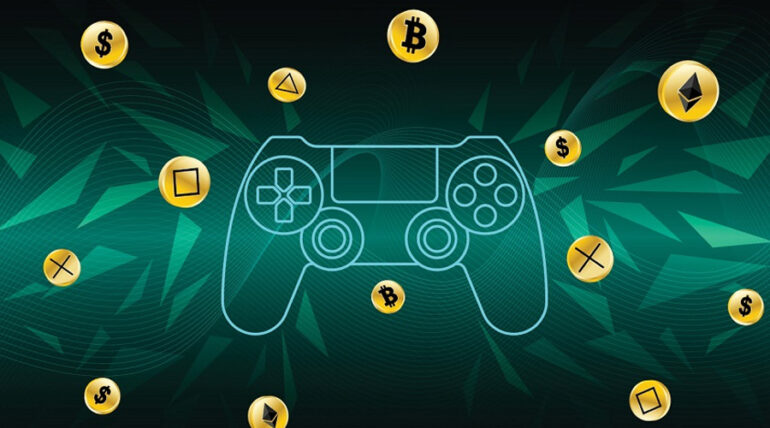Remember that Will Smith spaghetti video that went viral in 2023? AI’s quality to produce immersive videos has improved ever since.
After the December 9 Update in 2024, Sora is capable of making more lifelike videos. In fact, you can recreate the same video of Will Smith, but this time, you’ll get more accurate output. AI is revolutionizing the creative industry, and there’s no denying that it has a direct effect on the film and gaming industry.
It’s taking creators by surprise, be it for the narrative or showcasing unbelievable visual spectacles.
With AI-powered tools, now creators can produce dynamic, high-performing, and adaptive narratives that generate realistic character interactions. Furthermore, it helps create immersive and real time gaming experiences we’ve never imagined were possible.
The characters now have more depth, and NPCs (non-player characters) tailor the narrative of the game you enjoy, all thanks to AI. Here’s how AI is helping game producers come up with dynamic and self-dependent worlds to life.
Dynamic and Adaptive Narratives
First things first, AI is now taking the helm of thinking, and crafting stories that we love and enjoy. AI-powered games analyze and adapt to the players’ emotions in real time. This makes a game as fluid as water.
The story can take any course, and the narrative can be anything you’ve imagined or not imagined. Such a take on adventure and immersive games increases their playability.
Real-time adaptation of the story gives the games a massive level of personalization, even high-quality games with a strict narrative fail to achieve.
Here’s how the experts are making such feats possible:
NPCs Driving the Narrative
A game’s world feels more alive and immersive when the NPCs stop acting like the NPCs. Think of this like the movie Free Guy by Ryan Reynolds. It’s the story of an NPC that develops its free will. With AI in gaming, NPCs become independent (although nothing like Free Guy) and drive the course of the narrative.
They improve the players’ interaction and make the gaming world feel more alive and responsive. Each AI NPC has its own unique characteristics, qualities, and backstories, giving the story more depth and the players more things to explore.
Personalized Storytelling
AI is becoming smarter every year. Imagine a game that evolves its narrative in real time and lets players enjoy according to their current mental state. AI can analyze the players’ fatigue, emotions, and their gaming style.
Then it tailors the gaming experience accordingly. Such personalization allows players to enjoy the game consistently and builds a more engaging experience.
Enhanced Immersion
A good gaming experience is possible when the line between the gamer and the narrative is blurred. That’s what the AI-generated gaming environments can help achieve. With AI, it’s easier to create more immersive worlds and environments, keeping the gaming experience dynamic for the players.
Choreography and Visuals
AI is the growing force behind the high-quality visuals produced for immersive game narratives. It’s helping creators and game choreographers create immersive visual elements. Additionally, with AI-powered tools, it’s easier to create more immersive and realistic visuals.
Furthermore, the AI-powered graphic tools help create visuals and gameplay mockups faster than creators traditionally do. The common examples of AI-powered gameplay tools include:
Procedural Content Generation
AI-powered content generation helps with creating different game levels, environments, textures, and varied levels of experience for players faster. Furthermore, AI-powered techniques such as DLSS (Deep Learning Super Sampling) improve in-game graphics performance.
It also enhances the visual quality, enhancing resolution and detail. Also, the ability of AI to replicate real-world imagery and create a photorealistic environment makes it a great option for games.
Automated Upscaling & Concept Art Production
A major part of developing games involves creating different concept arts and using them for testing before finalization. AI helps with generating concept art and characters faster. It helps creators use the maximum potential of their creative abilities.
Also, automated upscaling using AI helps change the resolution of any quality of visuals. This way, the visual improvement process becomes more refined.
Democratization of Storytelling
AI tools are ushering inclusivity into the world of creativity. There are many creative minds with little expertise on the technical side. With AI doing the heavy handling of creative output, they can give their stories both voice and visuals. It’s easier to bring diverse voices and narratives to life with AI-powered game creations.
AI is also improving efficiency in game development and production. Developers are now more capable of focusing on the creative aspect of the game design. AI-generated props and content make it faster for creators to develop gaming platforms like GameTwist.
Examples of Popular Games using AI
AI is helping game developers transform their creative process and make it faster than ever before. The examples of such creativity were visible in the recently released games. The following are some popular names where AI was a big influence in the creative process:
1. Detroit: Become Human
This is a game that uses AI to create different complex characters and their arc, adapting to different choices of the player. It shows that AI helps transform and branch out different narratives.
2. The Witcher 3: Wild Hunt
Another popular game that uses procedural camera systems for animating different conversations. It showcases how creators will automate their animation work for games going forward.
3. Toy Story Funday Football
A popular name in Hollywood and the gaming industry, Toy Story Funday Football holds multiple examples of AI and motion capture, creating an alternate broadcast of a football game.
Will AI Lead the Gaming Industry in the Future?
These tools allow for the rapid creation of unique and high-quality concept art for game design. AI is not meant to replace human creativity but rather to augment it, providing developers with powerful tools to create more immersive, personalized, and engaging gaming experiences.
This technological advancement is reshaping the landscape of game development, blurring the lines between video games and other forms of entertainment, and promising a future where interactive narratives are more captivating and lifelike than ever before.






